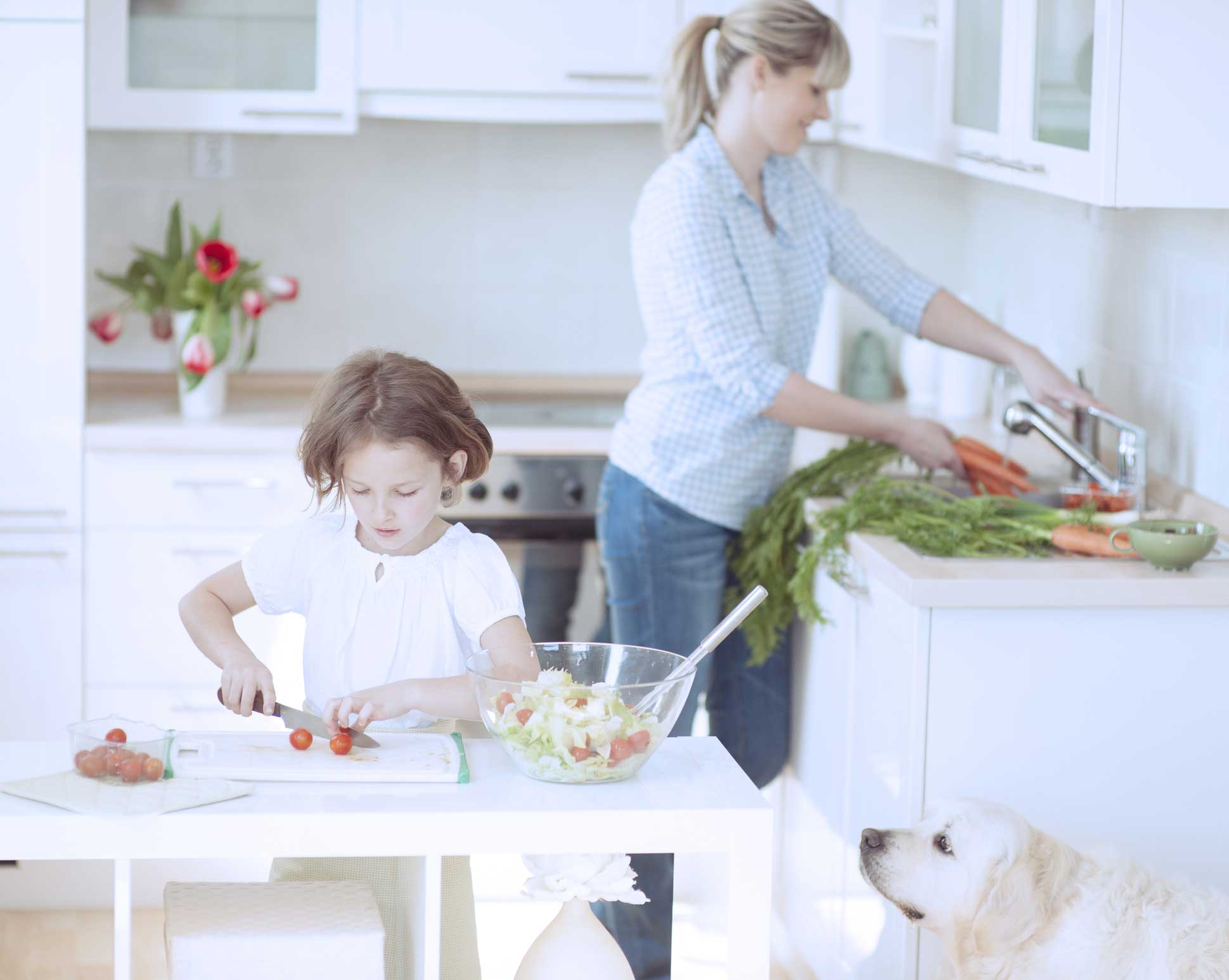<< Back
Stay-at-Home Cooking: The FDA’s 4 Steps To Food Safety

April 01, 2020
Editor’s note: Here’s a reminder to remain vigilant about foodborne illness during the COVID-19 pandemic as more people prepare food in their home. Follow these guidelines provided by the Food and Drug Administration.
By Food and Drug Administration
The food supply in the United States is among the safest in the world. But when certain disease-causing bacteria or pathogens contaminate food, they can cause foodborne illness, often called “food poisoning.”
The Federal government estimates that there are about 48 million cases of foodborne illness annually – the equivalent of sickening 1 in 6 Americans each year. And each year these illnesses result in an estimated 128,000 hospitalizations and 3,000 deaths.
Because foodborne illness can be serious — or even fatal — it is important for you to know and practice safe food handling behaviors to help reduce your risk of accidentally getting sick from contaminated food.
Four Steps to Food Safety
1. CLEAN: Wash hands and surfaces often
Bacteria can be spread throughout the kitchen and get onto hands, cutting boards, utensils, counter tops and food.
To ensure that your hands and surfaces are clean, be sure to:
- Wash your hands with warm water and soap for at least 20 seconds before and after handling food and after using the bathroom, changing diapers and handling pets.
- Wash your cutting boards, dishes, utensils and counter tops with hot soapy water after preparing each food item and before you go on to the next food.
- Consider using paper towels to clean up kitchen surfaces. If you use cloth towels wash them often in the hot cycle of your washing machine.
- Rinse fresh fruits and vegetables under running tap water, including those with skins and rinds that are not eaten.
- Rub firm-skin fruits and vegetables under running tap water or scrub with a clean vegetable brush while rinsing with running tap water.
- With canned goods, remember to clean lids before opening.
2. SEPARATE: Separate raw meats from other foods
Cross-contamination can occur when bacteria are spread from one food product to another. This is especially common when handling raw meat, poultry, seafood and eggs. The key is to keep these foods—and their juices—away from ready-to-eat foods.
To prevent cross-contamination, remember to:
- Separate raw meat, poultry, seafood and eggs from other foods in your grocery shopping cart, grocery bags and in your refrigerator.
- Use one cutting board for fresh produce and a separate one for raw meat, poultry and seafood.
- Never place cooked food on a plate that previously held raw meat, poultry, seafood or eggs.
- Don’t reuse marinades used on raw foods unless you bring them to a boil first.
3. COOK: Cook to the right temperatures
Food is safely cooked when it reaches a high enough internal temperature to kill the harmful bacteria that cause illness. Refer to the Safe Cooking Temperatures Chart for the proper internal temperatures.
To ensure that your foods are cooked safely, always:
- Use a food thermometer to measure the internal temperature of cooked foods. Check the internal temperature in several places to make sure that the meat, poultry, seafood, eggs or dishes containing eggs are cooked to safe minimum internal temperatures.
- Cook ground meat or ground poultry until it reaches a safe internal temperature. Color is not a reliable indicator of doneness.
- Cook eggs until the yolk and white are firm. Only use recipes in which eggs are cooked or heated thoroughly.
- When cooking in a microwave oven, cover food, stir, and rotate for even cooking. If there is no turntable, rotate the dish by hand once or twice during cooking. Always allow standing time, which completes the cooking, before checking the internal temperature with a food thermometer. Food is done when it reaches the safe minimum internal temperature.
- Bring sauces, soups and gravy to a boil when reheating.
4. CHILL: Refrigerate foods promptly
Refrigerate foods quickly because cold temperatures slow the growth of harmful bacteria. Do not over-stuff the refrigerator. Cold air must circulate to help keep food safe. Keeping a constant refrigerator temperature of 40ºF or below is one of the most effective ways to reduce the risk of foodborne illness. Use an appliance thermometer to be sure the temperature is consistently 40ºF or below and the freezer temperature is 0ºF or below.
To chill foods properly:
- Refrigerate or freeze meat, poultry, eggs, seafood and other perishables within 2 hours of cooking or purchasing. Refrigerate within 1 hour if the temperature outside is above 90ºF.
- Never thaw food at room temperature, such as on the counter top. Food must be kept at a safe temperature during thawing. There are three safe ways to defrost food: in the refrigerator, in cold water, and in the microwave. Food thawed in cold water or in the microwave should be cooked immediately.
- Always marinate food in the refrigerator.
- Divide large amounts of leftovers into shallow containers for quicker cooling in the refrigerator.
- Use or discard refrigerated food on a regular basis. Follow the recommendations in the Refrigerator & Freezer Storage Chart.
Is It Done Yet?
Use a food thermometer to be most accurate. You can’t always tell by looking.
Not feeling well? Call your healthcare provider for guidance and try to avoid going directly to an emergency department or urgent care center, as this could increase the chances of the disease spreading.
Click here to schedule a virtual visit with a Hartford HealthCare-GoHealth Urgent care doctor.
Stay with Hartford HealthCare for everything you need to know about the coronavirus threat. Click here for information updated daily.
Questions? Call our 24-hour hotline (860.972.8100 or, toll-free, 833.621.0600).
Get text alerts by texting 31996 with COVID19 in the message field.